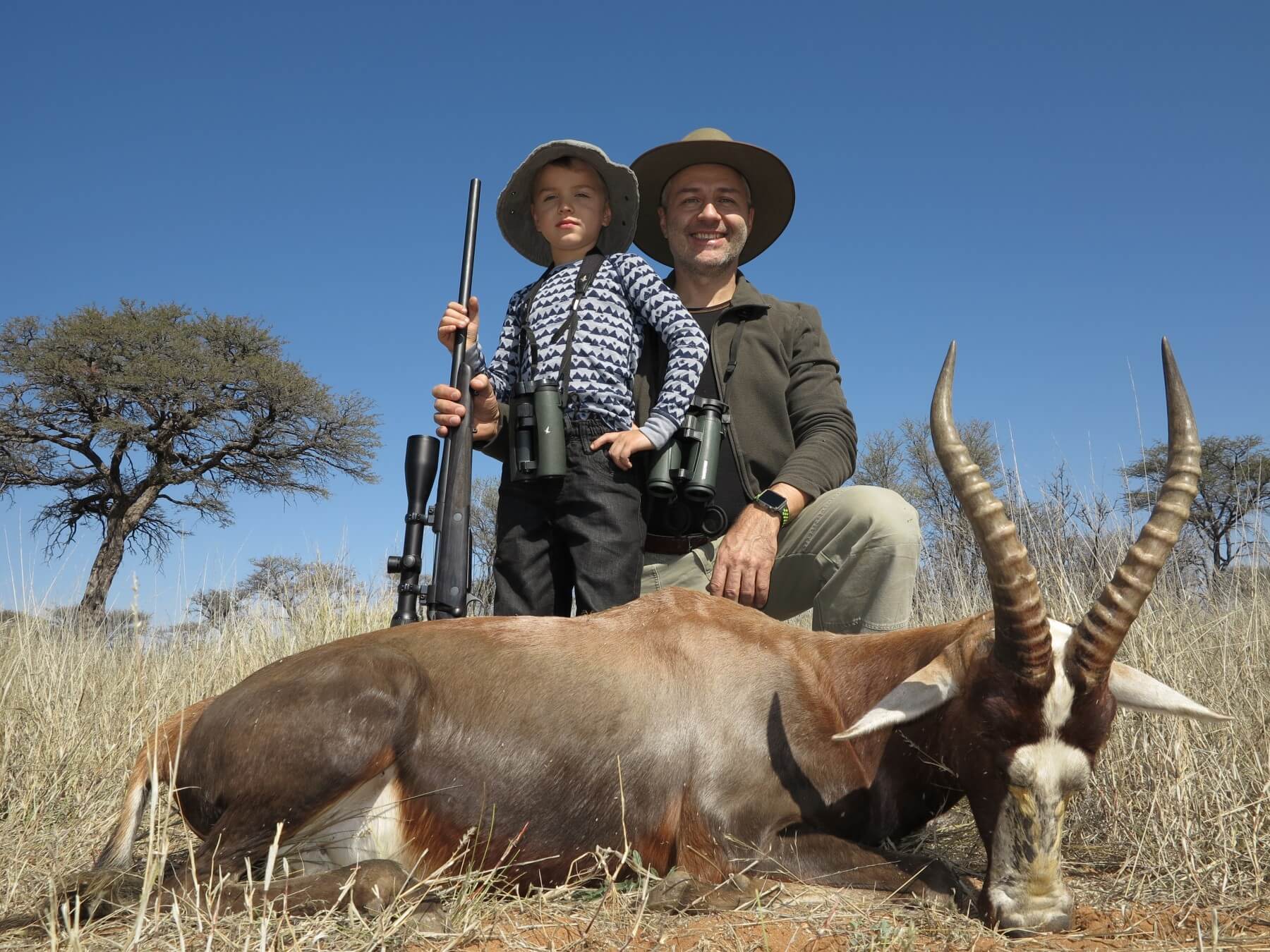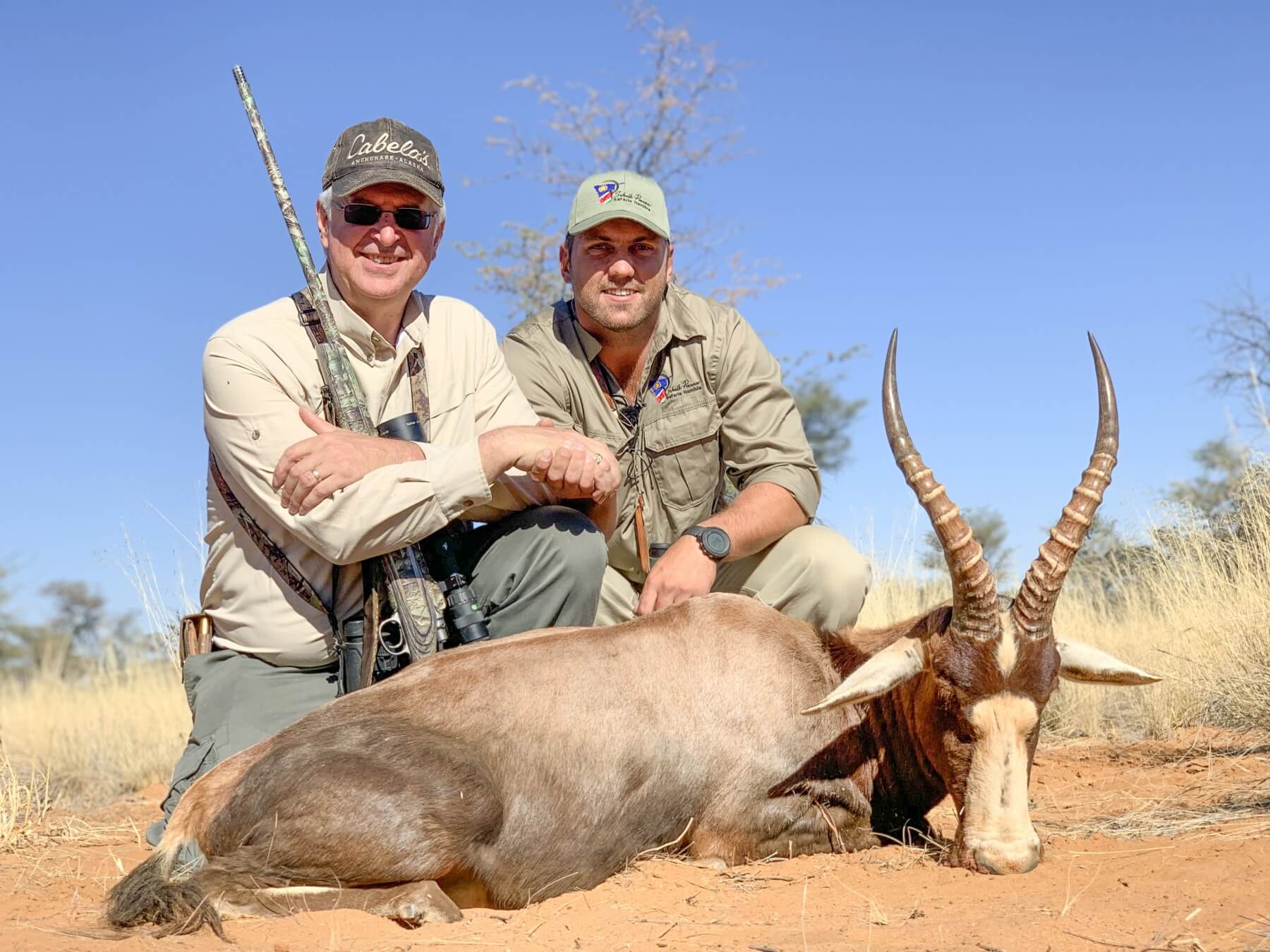Physically, rams and ewes are remarkably similar. Their mass can be as much as 85 kg. A characteristic of the Blesbok is the prominent white blaze on the face and a horizontal brown strip which divides this blaze above the eyes. Body colour is brown with a lighter coloured saddle on the back, and the rump an even lighter shade. The legs are brown with a white patch behind the top part of the front legs. Lower legs whitish. Both sexes carry horns, ringed almost to the tip. Female horns are slightly more slender.
The blesbok lives on the open plains of the Southern Africa highveld. Primarily grazers, they form herds consisting of females (ewes) and juveniles, while the males (rams) tend to be solitary.
The blesbok is a seasonal breeder. Rutting occurs during March to May. Births peak during November and December after a gestation period of about 240 days. Females give birth to single lambs.




